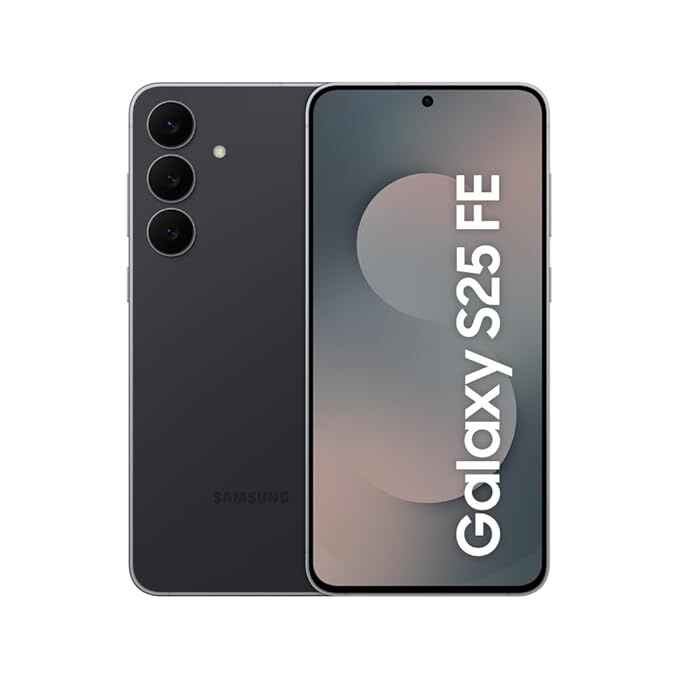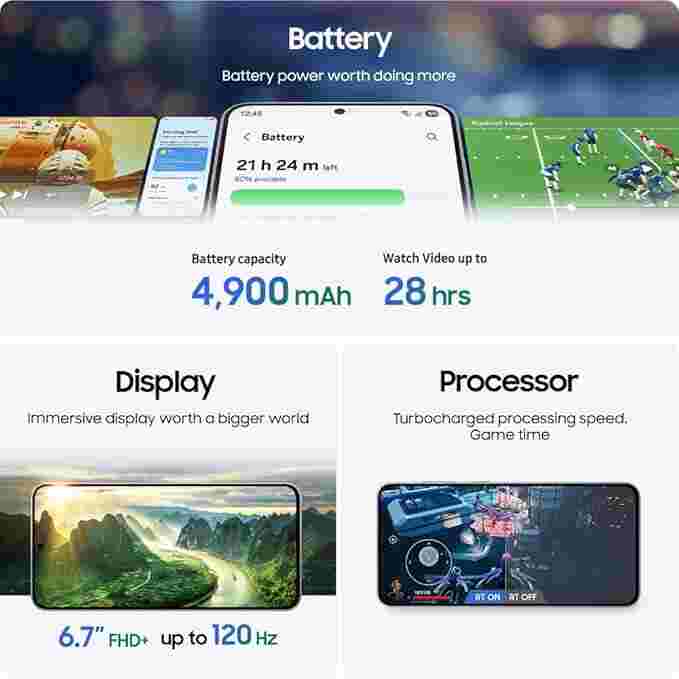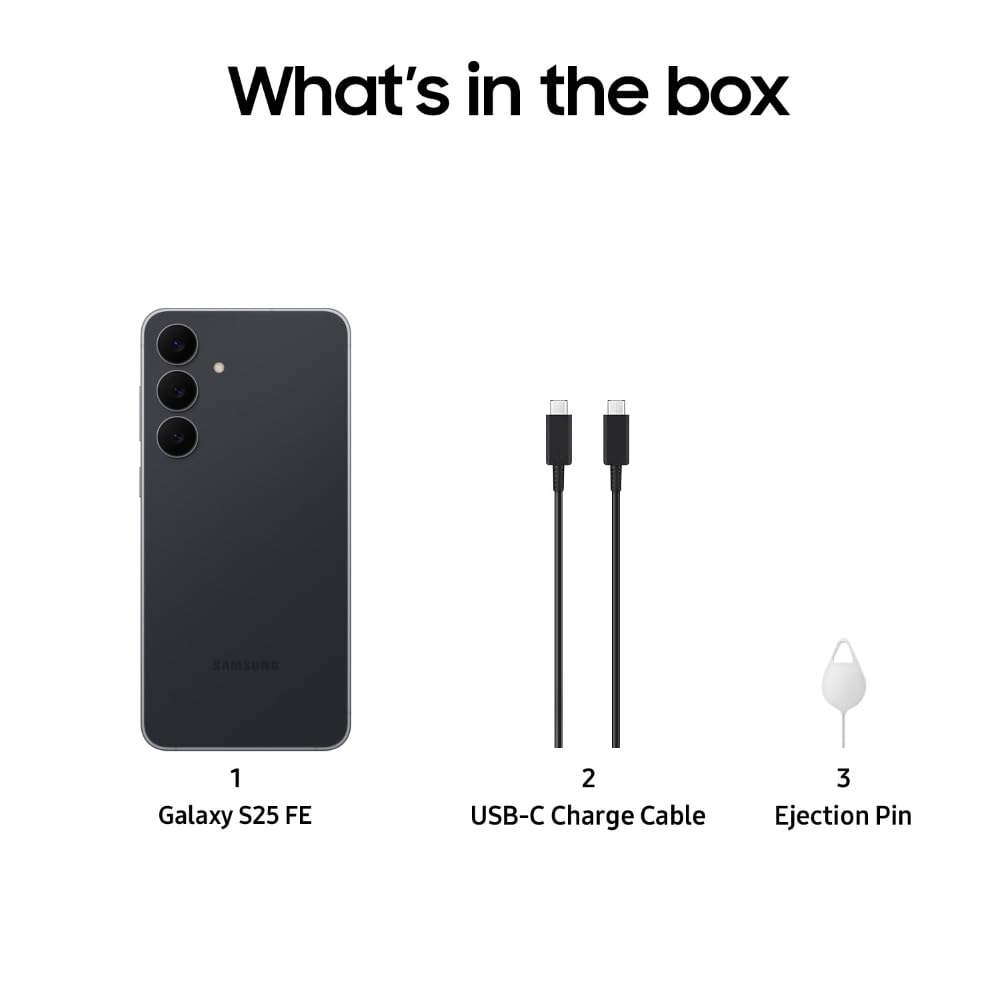The Galaxy S25 FE arrives as Samsung’s latest attempt to make flagship power more affordable — but this time, it feels like a balancing act that tips slightly off-center. While the phone refines nearly every design element from its predecessor and borrows high-end software features from the Galaxy S25 series, the question remains: does it still deserve the “Fan Edition” badge in 2025?
In this review, we’ll break down how the S25 FE performs in real-world use, where Samsung nailed it, and where it undercuts its own potential.

Design & Build: Slimmer, Lighter, and Still a Bit Stiff
There’s no denying Samsung worked on refinement this year. The Galaxy S25 FE is both slimmer (7.4 mm) and lighter (190 g) than the S24 FE, making it the slimmest Fan Edition yet. The device feels premium, with Gorilla Glass Victus Plus on both sides and an aluminum frame that mirrors the S25 lineup. It’s even IP68 rated, so dust and splashes are no worry.
But ergonomics still lag behind the aesthetics. Those flat edges and slightly sharp corners make the phone look classy yet feel less comfortable to grip for long sessions. The large 6.7-inch footprint doesn’t help either — this is still a two-handed phone for most users. So yes, it’s refined, but not necessarily easier to live with.
Display: Beautiful Colors, But Samsung Played It Too Safe
Samsung’s display heritage remains intact. The 6.7-inch FHD+ AMOLED panel produces vivid colors, deep blacks, and excellent brightness (up to 1900 nits) with HDR10+ and Vision Booster support. Streaming HDR videos on Netflix or YouTube looks fantastic, and the 120 Hz adaptive refresh rate makes UI navigation buttery smooth.
However, enthusiasts expecting a jump in resolution will be disappointed. The panel remains FHD+, not the sharper 1.5K or QHD+ resolution found on pricier models. While bezels are 26% thinner than last year’s, the slight “chin” remains — a small but noticeable asymmetry once you see it.
There’s also no confirmed PWM or DC dimming, which could bother flicker-sensitive users. In short: the display looks great, but Samsung’s decision to reuse old panel tech limits its wow factor.

Performance: Exynos 2400 Returns With Mixed Results
Powering the Galaxy S25 FE is Samsung’s Exynos 2400 chip — a solid performer on paper, but a controversial choice in late 2025. It’s the same silicon used in the S24 flagship line, and while it’s still fast, Samsung’s decision to skip the newer Exynos 2500 feels like a missed opportunity.
Everyday performance is smooth. App launches, scrolling, and multitasking run without hiccups, and the device scored around 2.1 million on AnTuTu, placing it in flagship territory. But sustained workloads reveal the compromises. Long gaming sessions with Genshin Impact or Call of Duty: Mobile expose thermal throttling, with CPU power dropping by nearly 50% during stress tests.
Samsung did include a 13% larger vapor chamber, but even that can’t fully contain the heat under extended pressure. This phone isn’t a gaming powerhouse — it’s a performance sprinter, not a marathon runner.
And the base 128 GB storage model (still UFS 3.1) feels stingy in 2025. You’ll need to pay more for the 256 GB UFS 4.0 variant to get proper flagship-level speeds. That alone makes the base model hard to recommend.
Software & AI: A Future-Proof Highlight

Here’s where Samsung truly delivers. The Galaxy S25 FE ships with One UI 8 on Android 16 and comes with seven years of OS and security updates — matching Google’s and Samsung’s flagship promises. That’s an industry-leading commitment for longevity.
You also get Samsung’s complete Galaxy AI suite, including Generative Edit, Circle to Search, Audio Eraser, and Instant Slow-Mo. The AI tools integrate neatly into the camera and gallery, and the Circle to Search feature is surprisingly useful during gameplay or browsing sessions.
Still, not everything clicks. Some AI extras like Daily Briefing and Summary Assist feel gimmicky or redundant. Samsung’s Game Booster also feels bare-bones compared to rival ecosystems like OxygenOS 14 or ColorOS. The software is excellent overall, but the “smart” features sometimes feel more like flashy additions than everyday essentials.
Camera System: Great Selfies, Mediocre Zoom
On paper, the Galaxy S25 FE’s triple camera setup mirrors its predecessor:
50 MP main (OIS)
12 MP ultra-wide
8 MP 3× telephoto
12 MP front camera (upgraded from 10 MP)
In real-world use, Samsung’s image tuning still favors bright, saturated results. Photos look instantly social-media-ready, with vibrant skies and punchy contrast. The Pro Visual Engine from the S25 series genuinely improves noise control and low-light detail.
However, the weaknesses are clear. The 8 MP telephoto is underwhelming — soft, noisy, and unreliable in dim lighting. It upscales shots to 12 MP, often producing fuzzy textures and lost detail. Portrait mode, while better than before, sometimes struggles with edge detection around hair or moving subjects.
The real improvement lies in the selfie department. The new 12 MP front sensor delivers crisp, balanced skin tones and excellent dynamic range — finally a selfie camera worthy of the FE badge.
Video capture remains strong across all sensors with 4K 60 fps and 8K 30 fps support, though thermal throttling can still impact long recording sessions.
Battery & Charging: Numbers Up, Real Gains Down

Samsung boosted the battery to 4900 mAh and added support for 45 W wired charging and 15 W Qi2 wireless. Sounds good on paper, right? Unfortunately, real-world results tell a different story.
Screen-on time averaged around 5 hours during heavy usage, similar to the S24 FE — not exactly an endurance upgrade. High-intensity gaming sessions drain it even faster, with just over three hours of playtime from a full charge.
And while the charger now supports 45 W, the actual charging time barely improved: about 70 minutes from 0–100%, matching last year’s 25 W performance. Add the fact that no charger comes in the box, and the battery story quickly loses its shine.
Verdict: The Galaxy S25 FE Is Polished — But Overpriced

There’s a lot to admire about the Galaxy S25 FE. It’s beautifully built, has a stunning display, improved selfies, and the best long-term software support in its class. In many ways, it’s Samsung’s most refined FE yet.
But when you weigh that against its Exynos-based performance, mediocre battery life, and stagnant charging speeds, it’s hard to ignore the cracks in the formula. At roughly £649 (₹60,000 approx.), it sits dangerously close to the Galaxy S25 Plus and faces fierce competition from better-performing rivals like the OnePlus 13R and Poco F7 Ultra.
In short, the Galaxy S25 FE is a good phone — just not a good deal. Unless Samsung discounts it heavily, most buyers will be better served by alternatives that offer more power or efficiency for the same money.
Galaxy S25 FE FAQs
1. Is the Galaxy S25 FE good for gaming?
It handles casual games well but struggles with sustained performance in heavy titles due to thermal throttling.
2. Does the Galaxy S25 FE support wireless charging?
Yes, it supports 15 W Qi2 wireless charging, but charging speeds remain modest.
3. What is the battery life of the Galaxy S25 FE?
Expect around 5 hours of screen-on time under moderate to heavy use — average for its class.
4. Should you buy the Galaxy S25 FE in 2025?
Only if you find a strong discount. At its launch price, competitors offer better performance and battery endurance.
